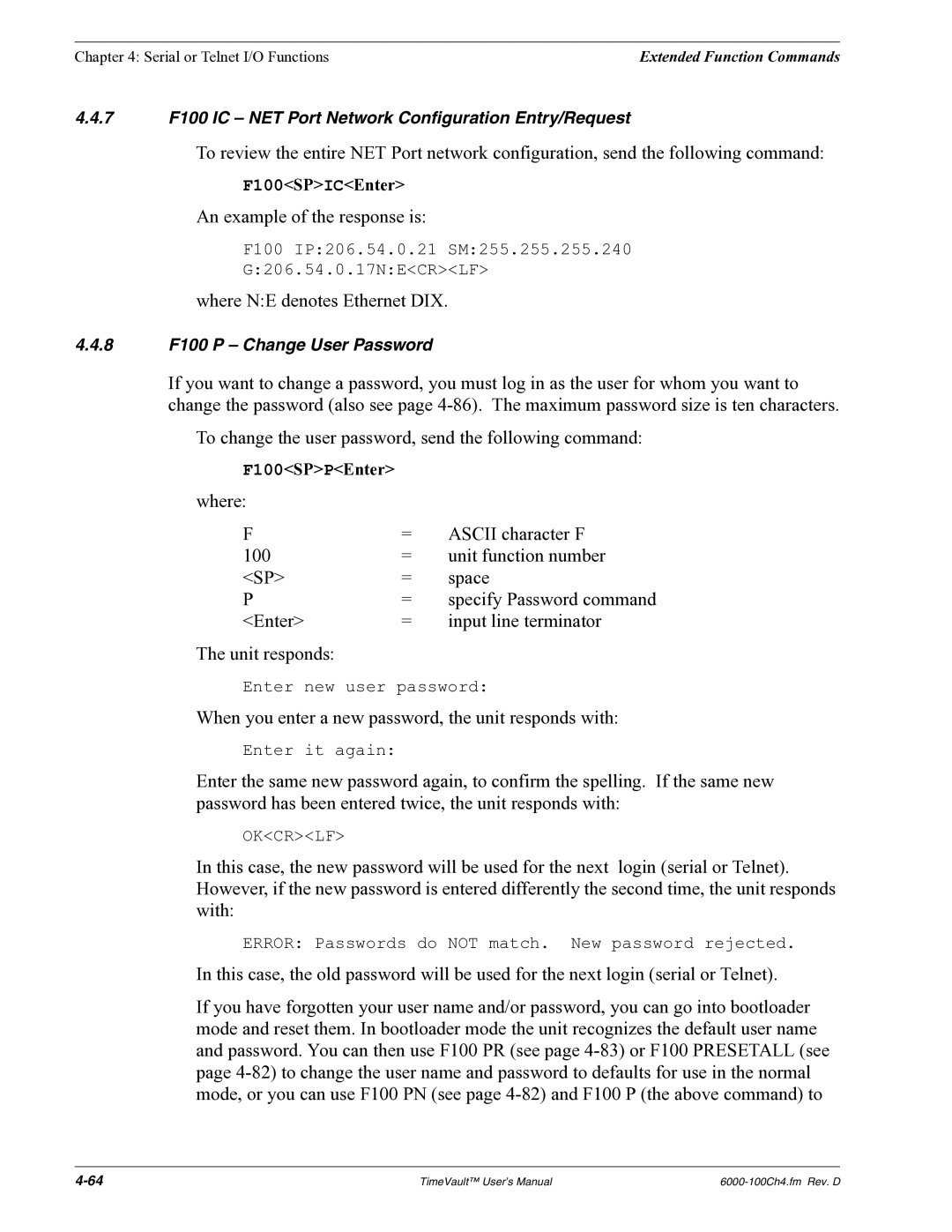
Chapter 4: Serial or Telnet I/O Functions | Extended Function Commands |
4.4.7F100 IC – NET Port Network Configuration Entry/Request
To review the entire NET Port network configuration, send the following command:
F100<SP>IC<Enter>
An example of the response is:
F100 IP:206.54.0.21 SM:255.255.255.240
G:206.54.0.17N:E<CR><LF>
where N:E denotes Ethernet DIX.
4.4.8F100 P – Change User Password
If you want to change a password, you must log in as the user for whom you want to change the password (also see page
To change the user password, send the following command:
F100<SP>P<Enter>
where: |
|
|
F | = | ASCII character F |
100 | = | unit function number |
<SP> | = | space |
P | = | specify Password command |
<Enter> | = | input line terminator |
The unit responds: |
|
|
Enter new user password:
When you enter a new password, the unit responds with:
Enter it again:
Enter the same new password again, to confirm the spelling. If the same new password has been entered twice, the unit responds with:
OK<CR><LF>
In this case, the new password will be used for the next login (serial or Telnet). However, if the new password is entered differently the second time, the unit responds with:
ERROR: Passwords do NOT match. New password rejected.
In this case, the old password will be used for the next login (serial or Telnet).
If you have forgotten your user name and/or password, you can go into bootloader mode and reset them. In bootloader mode the unit recognizes the default user name and password. You can then use F100 PR (see page
TimeVault™ User’s Manual |
